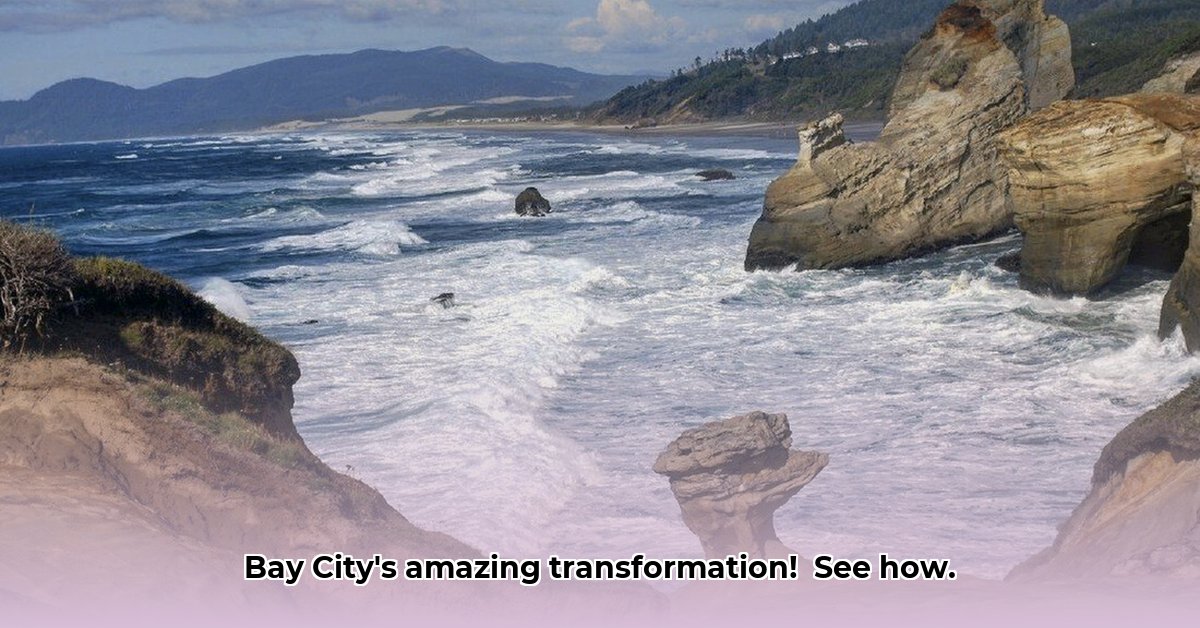
Bay City's Amazing Transformation: A Family's Dream Takes Shape
The McRae family's revitalization of Bay City's former paint factory stands as a remarkable example of community-driven urban renewal. This isn't just a story about a new building; it's a narrative of family legacy, smart urban planning, and the power of shared vision. The project transformed a derelict site into a thriving mixed-use development, seamlessly blending residential and commercial spaces. But how did the McRaes achieve this remarkable feat?
A Family Legacy Reborn
For the McRaes, this project transcends bricks and mortar; it's about securing a brighter future for generations. Their deep-rooted family history in Bay City fueled their commitment to revitalizing their community. This development represents a powerful legacy passed down to future generations. Their vision—a dynamic mixed-use space—isn't merely about constructing homes; it's about fostering a thriving community where residents live, work, and connect. Isn't this the kind of revitalization every community dreams of?
The Challenges and Triumphs of Development
The path to success wasn't without obstacles. Securing approvals, navigating zoning regulations, and assembling financing proved significant hurdles. However, the McRaes met these challenges with strategic planning, unwavering community engagement, and a compelling vision that resonated with stakeholders.
Step-by-Step Success:
Navigating Zoning Hurdles: Meticulous planning, transparent communication addressing community concerns, and a demonstrable alignment with sustainable development goals were pivotal in securing necessary approvals. The McRaes invested countless hours collaborating with city officials and community groups to build trust and address questions.
Securing the Funding: A multifaceted approach to funding was crucial. This likely involved a combination of bank loans, private investors, and possibly government grants. Their well-researched financial projections played a key role in attracting investors, demonstrating profitability while highlighting the community benefits.
Building Community Consensus: Extensive community outreach and open dialogues were essential. The McRaes actively listened to and addressed residents' concerns regarding potential displacement, increased traffic, and other anxieties. Their transparent approach fostered trust and collaboration.
A Timeline of Success:
| Stakeholder | Short-Term Goals (0-1 Year) | Long-Term Goals (3-5 Years) |
|---|---|---|
| McRae Family | Secure approvals, finalize plans, obtain financing, begin construction | Complete construction, attract businesses and residents, ensure long-term success |
| Bay City Government | Approve plans, streamline permitting, explore funding opportunities | Monitor economic impact, replicate success elsewhere, provide ongoing support |
| Residents | Participate in meetings, express opinions, provide feedback | Enjoy improved walkability, benefit from amenities and businesses, strengthen community |
| Businesses | Evaluate opportunities, assess market demand | Contribute to economic vitality, become integral community members |
Addressing Concerns and Forging Partnerships
Beyond permits and funding, building community consensus was paramount. The McRaes implemented extensive outreach initiatives, addressing concerns directly and honestly. They proactively engaged with residents, tackling anxieties about displacement, traffic, and other typical development concerns. Their success in building rapport and collaboration is a key element of this revitalization story.
A Model for Sustainable Growth: Lessons Learned
The Bay City project offers valuable lessons for other communities. It highlights the crucial role of community-driven initiatives, the importance of navigating regulations and financing options, and the long-term benefits of environmentally conscious development. The project serves as a blueprint, demonstrating that economic growth and social responsibility can coexist. The McRaes' success demonstrates the power of vision, persistence, and community engagement.
How to Finance a Mixed-Use Community Development Project: Bay City's Success
Bay City’s transformation provides a compelling case study in financing mixed-use community development. The McRae family's success stems from a combination of vision, strategic partnerships, and innovative financing, revitalizing a once-struggling area.
Building Bridges: Public-Private Partnerships
The project's success rests on a strong public-private partnership. The city government played a vital role, providing incentives and navigating bureaucratic processes. Regular town hall meetings kept residents informed and addressed concerns, building trust and a sense of shared ownership.
Funding the Future: A Multi-Pronged Approach
The McRaes diversified their funding sources, utilizing a combination of strategies. This included traditional bank loans along with Tax Increment Financing (TIF), a method using projected property tax increases to fund infrastructure improvements.
| Funding Source | Percentage | Pros | Cons |
|---|---|---|---|
| Bank Loans | 40% | Reliable, predictable | Higher interest rates, stringent requirements |
| Tax Increment Financing (TIF) | 30% | Funds infrastructure upfront | Relies on future tax revenue; potential delays |
| Private Investment | 20% | Access to capital, potential expertise | Riskier; less predictable |
| Grants & Subsidies | 10% | Reduced costs, community support | Competitive application process; limited funds |
Navigating the Regulatory Landscape
The McRaes' meticulous research of zoning laws and environmental regulations, coupled with proactive engagement with relevant agencies, minimized delays. Smooth regulatory approvals were vital to maintaining project momentum.
Community Engagement: A Cornerstone of Success
The McRaes' collaborative approach, involving town hall meetings and incorporating resident feedback into the design, transformed skeptics into supporters and fostered a sense of shared ownership.
Key Takeaways:
- Public-Private Partnerships: Collaboration between developers and local governments is essential.
- Diversified Funding: Multiple funding sources mitigate risk and enhance financial stability.
- Community Engagement: Resident involvement builds trust and ensures alignment with community needs.
- Regulatory Compliance: Proactive engagement with agencies minimizes delays.
- Transparent Communication: Open communication fosters trust and reduces conflicts.